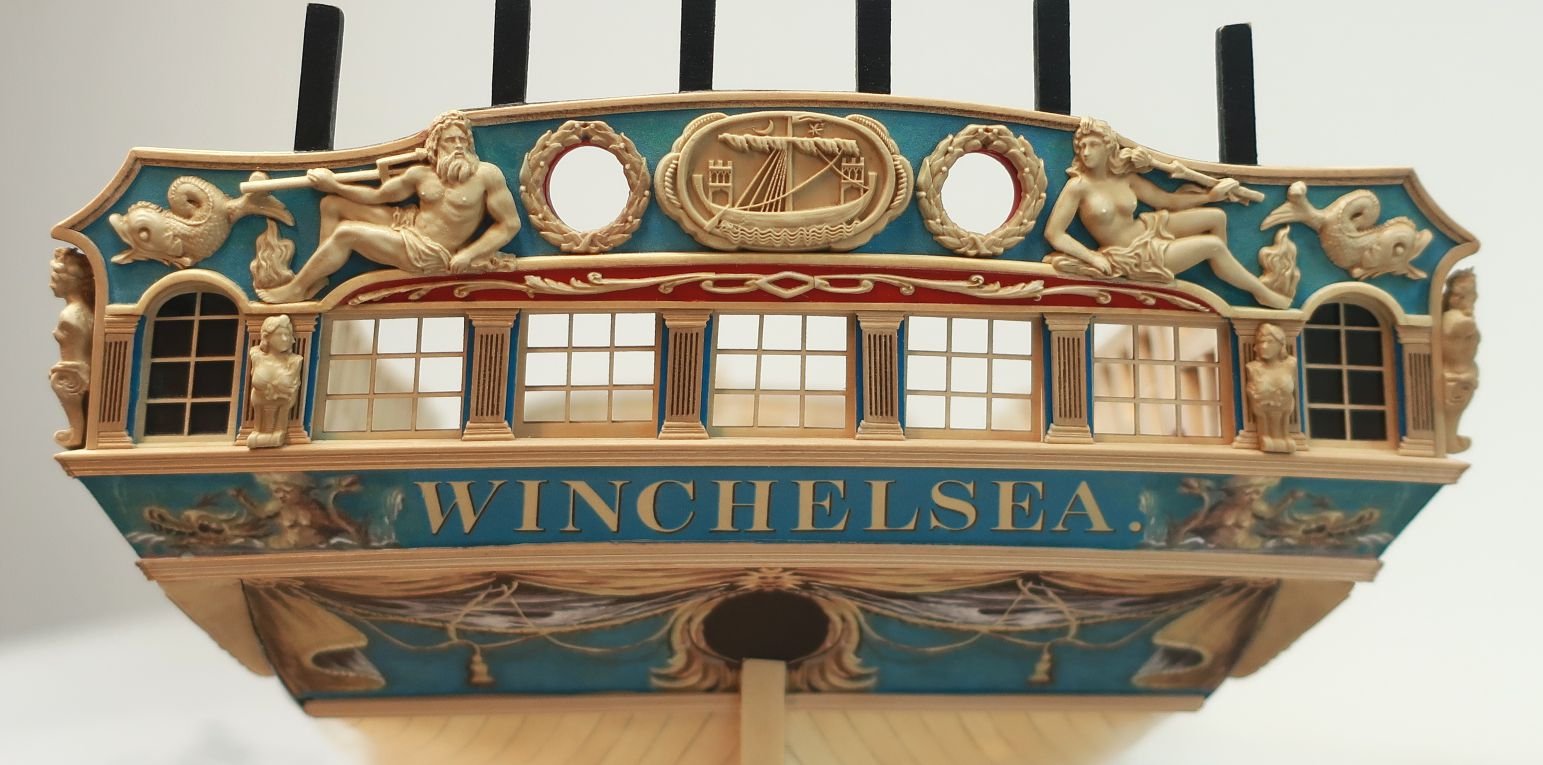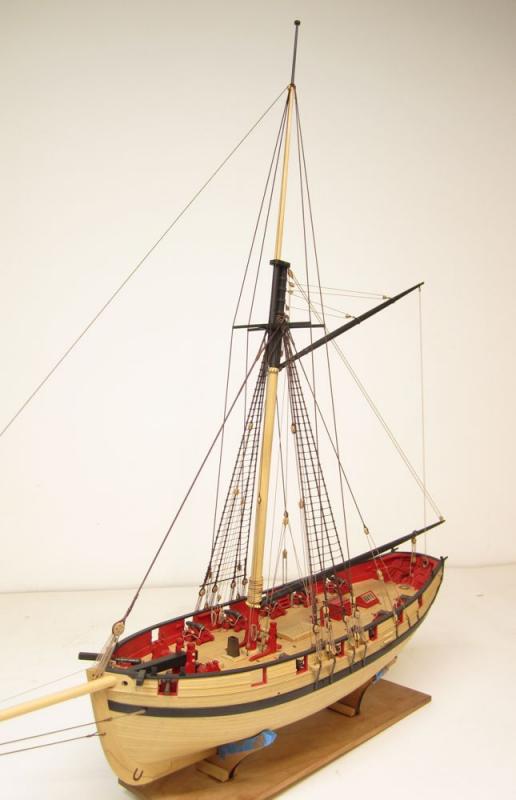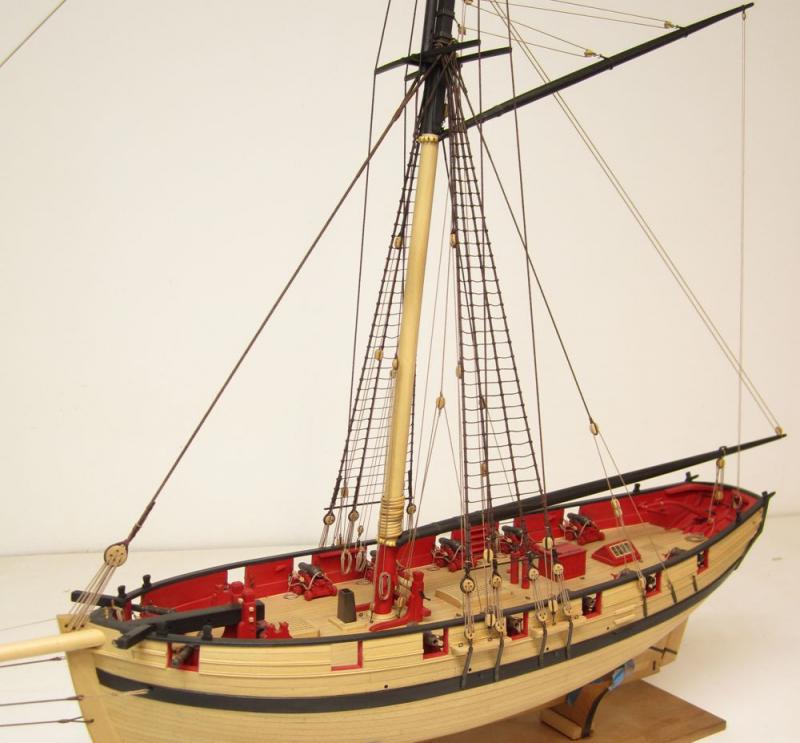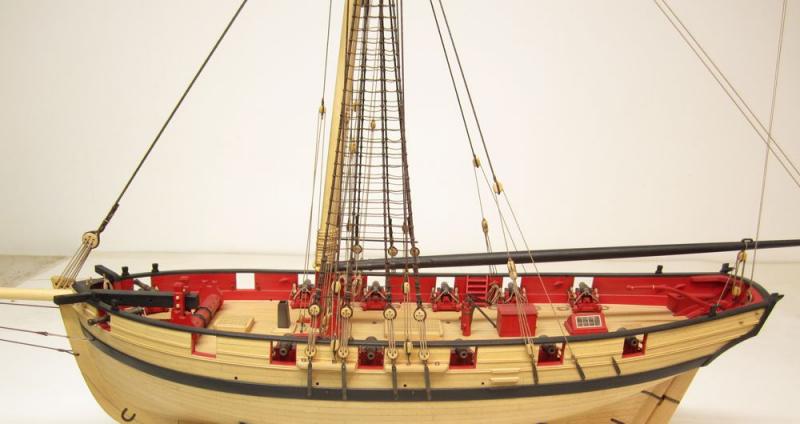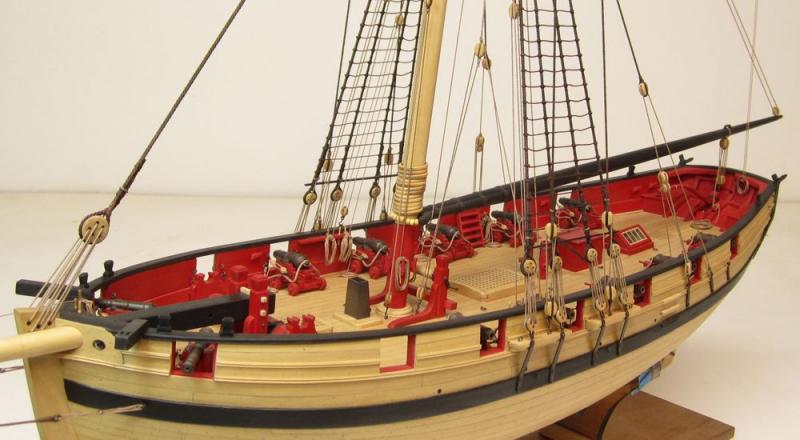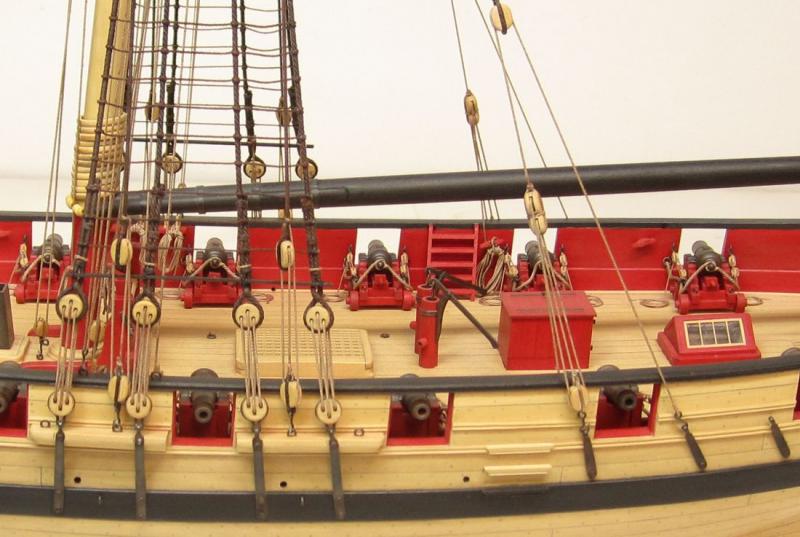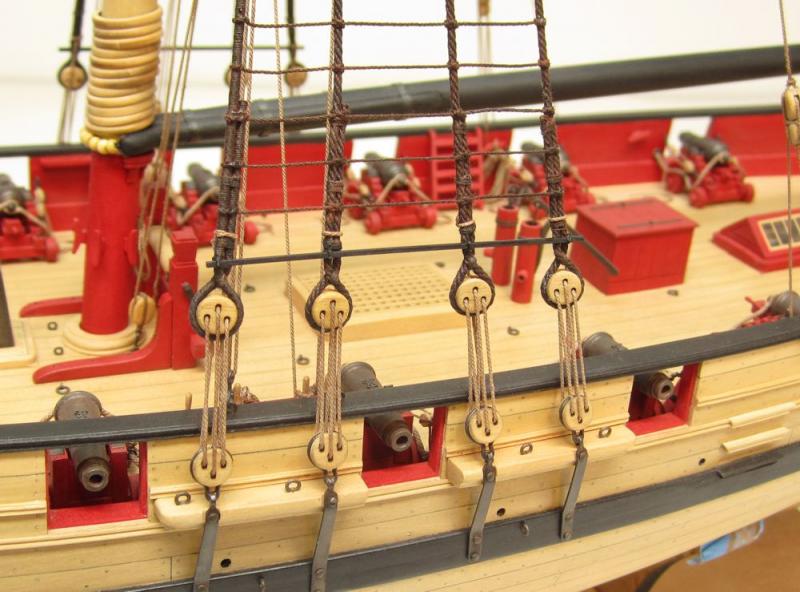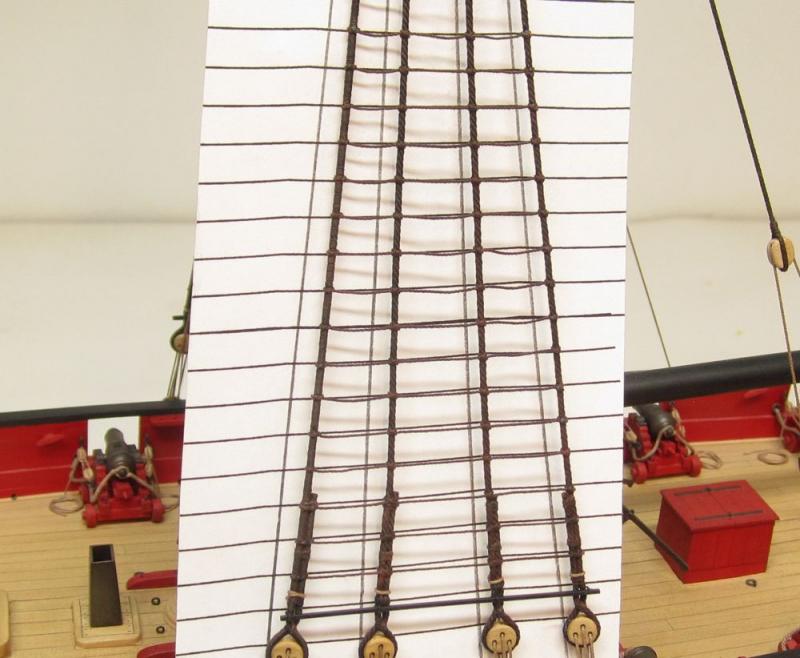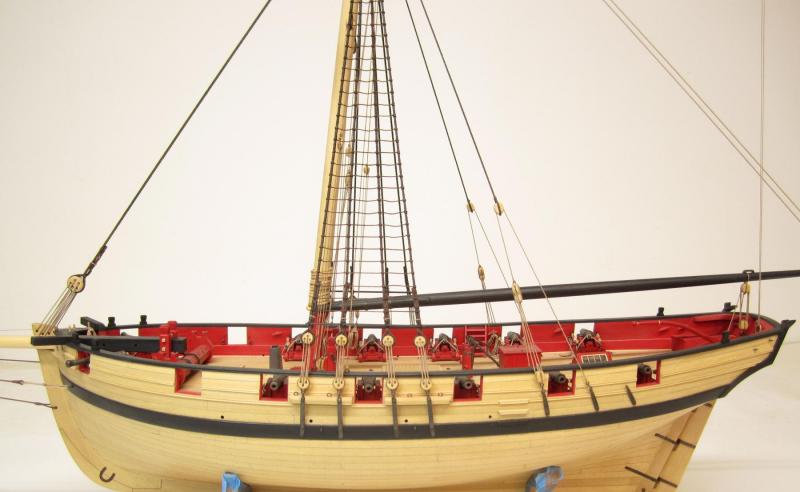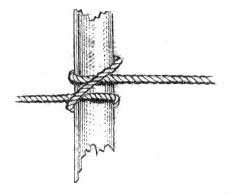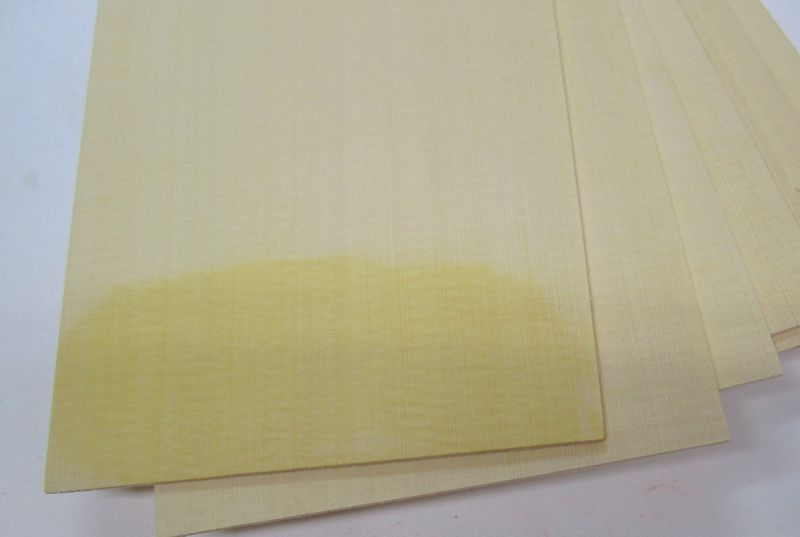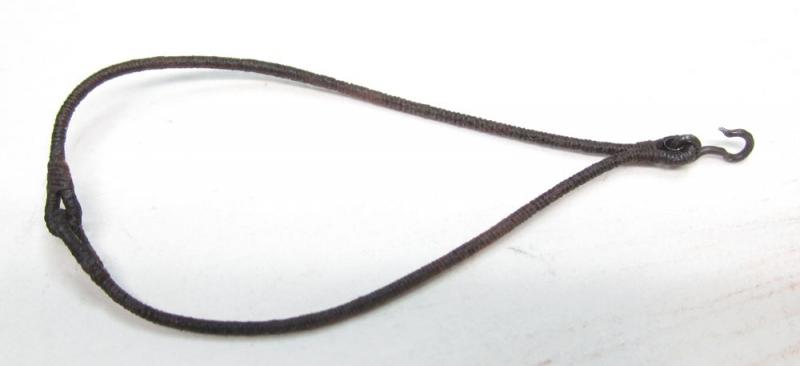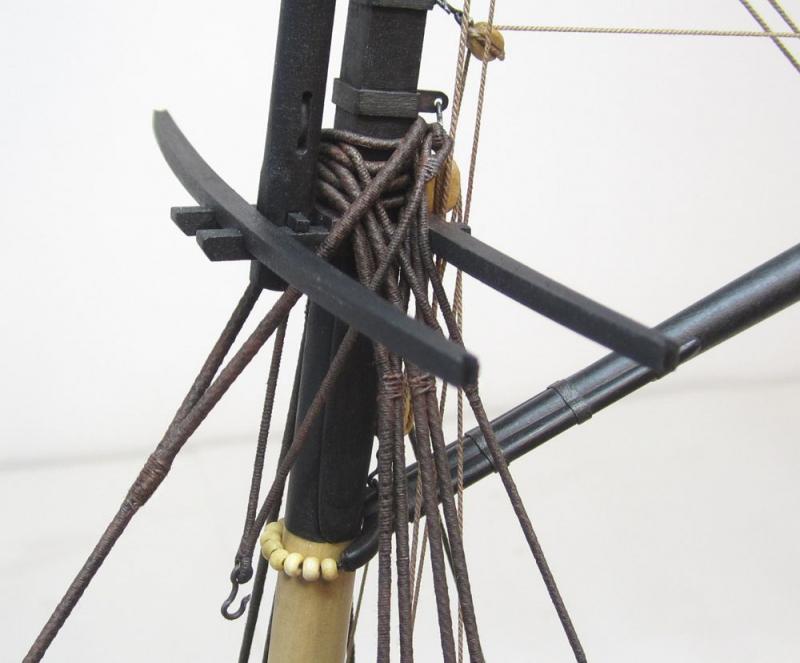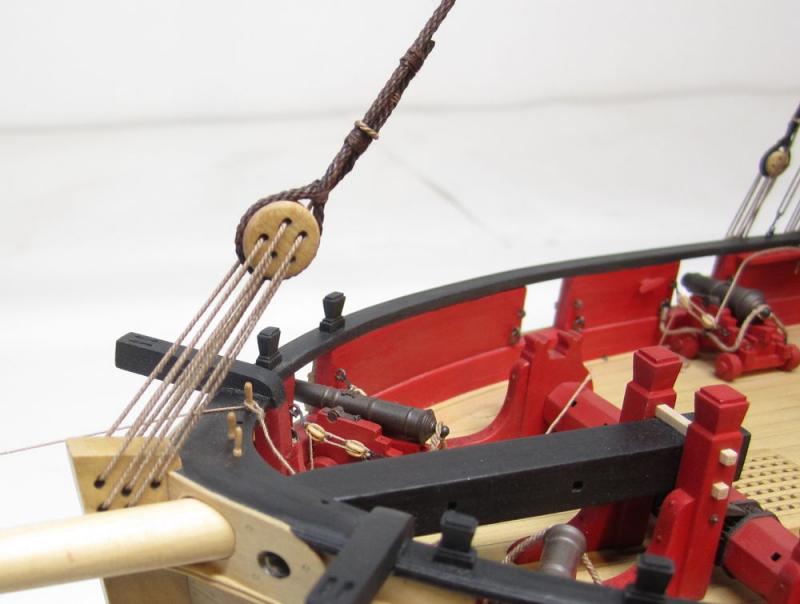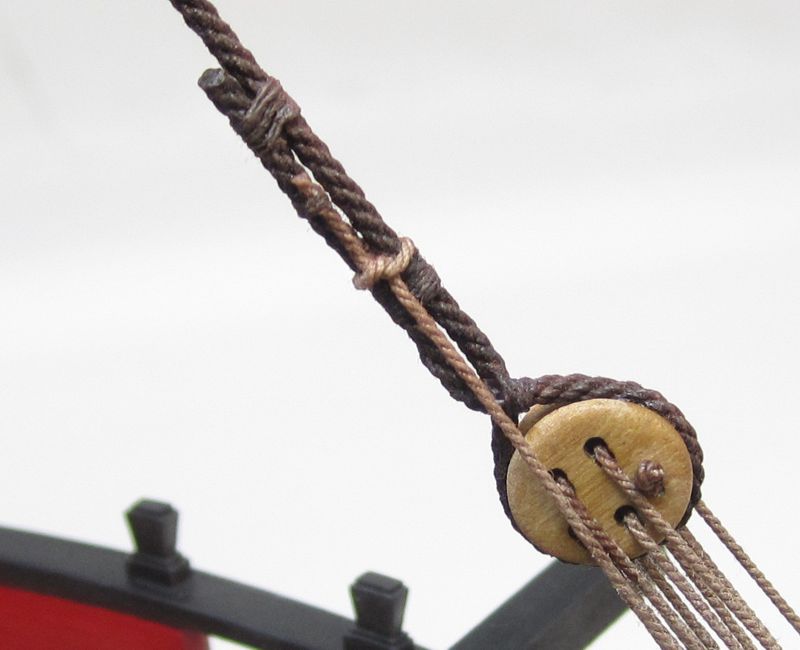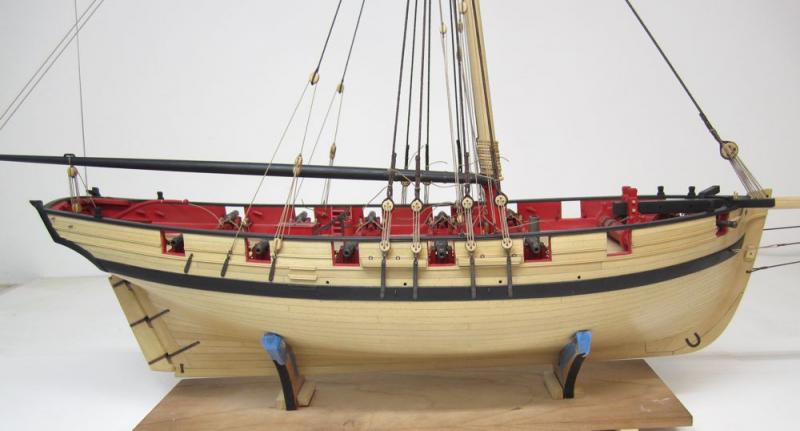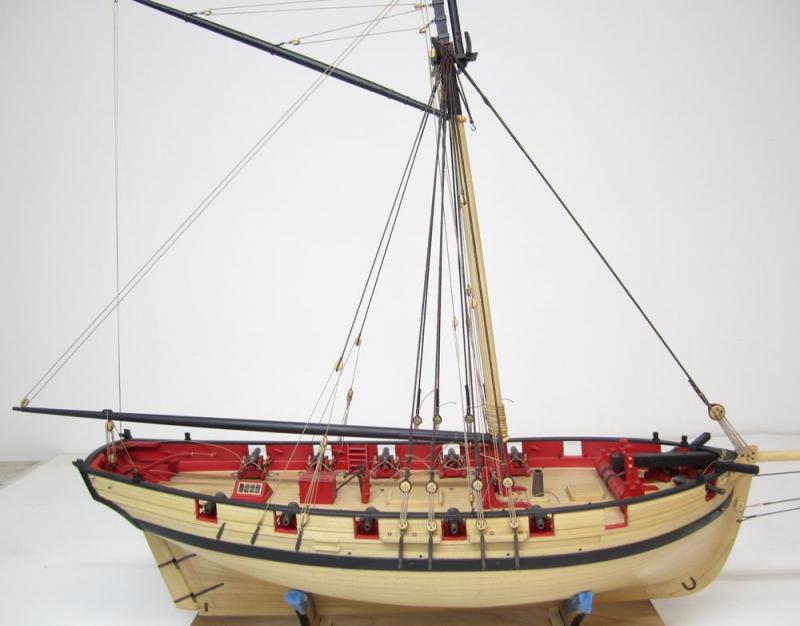-
Posts
9,504 -
Joined
-
Last visited
Content Type
Profiles
Forums
Gallery
Events
Everything posted by Chuck
-
Today I finished the standing rigging. Once the ratlines were done I only had to rig the topmast shrouds and the topmast stay. Even though I have shown the topmast backstay on the plans, I did not rig them. I just wanted to show what they would look like. Only under rare conditions were they used. I have never seen a contemporary model with them rigged and the straps on the side of the hull are always left empty. So I decided to follow suit. I think it ruins the look of the model a bit as well and this is more in keeping with what everyone is used to seeing. Next up I will start the running rigging. Its getting close!!!!
- 1,051 replies
-
- cheerful
- Syren Ship Model Company
-
(and 1 more)
Tagged with:
-
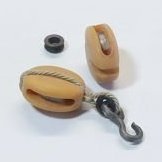
HM Cutter Cheerful 1806 by Erik W - 1:48 scale
Chuck replied to Erik W's topic in - Build logs for subjects built 1801 - 1850
That looks very good. -
Thats a great method Druxey...thank You for that. And thank you all for the nice comments and likes.
- 1,051 replies
-
- cheerful
- Syren Ship Model Company
-
(and 1 more)
Tagged with:
-
Thank You guys. Right you are Greg....Yes the outside shrouds are indeed square knots. My bad for that omission I will go back .and add that to the post to avoid confusion.
- 1,051 replies
-
- cheerful
- Syren Ship Model Company
-
(and 1 more)
Tagged with:
-
I am still thinking about it....it will hit me sooner or later.
- 1,051 replies
-
- cheerful
- Syren Ship Model Company
-
(and 1 more)
Tagged with:
-
I added the sheer pole. It is lashed to the outside of the shrouds above the deadeyes. I painted it black but it could have been left natural also. It is just a 1/32" x 1/32" strip with the edges rounded off a bit. Then I started the ratlines with .012 rope. You dont want to go heavy with these. The outside shrouds are simple square knots. But I used clove hitches on each inside shrouds. I urge folks to use them rather than simply tie a knot on all four shrouds. The lines hang much better. Its easy to do. I used a card with both horizontal lines and lines to show the shrouds. Its not enough to just use horizontal lines. Having the shrouds drawn on the card will make it easier to watch your progress. You dont want to gradually pull the shrouds in. That hourglass shape for shrouds on a model is the kiss of death. This helps you keep them straight and not pull them in as you progress. I found it better to leave the ratlines a little loose rather than pull them tight and I try to shape them after its done. Only some watered down white glue was applied on the knots of the outer shrouds only. The two inner shrouds have no glue at all. I waited until a series of rows were complete so I could adjust them before adding the glue. You can also see that I finally cut off all the loose ends at the belaying points after re-tensioning the lines and I added rope coils to the belaying points. Now its time to start the ratlines on the starboard side. Yay for me. Merry Christmas everyone!!! Chuck
- 1,051 replies
-
- cheerful
- Syren Ship Model Company
-
(and 1 more)
Tagged with:
-
The longboat is not a beginner kit. Keep that in mind. Its rated as intermediate but I would consider no good for beginners. Dont let the price fool you. Less expensive doesnt equate to easy. Just smaller. I would say that planking the smaller vessels like the lonboat is in fact advanced rather than intermediate. Chuck
-

HM Cutter Cheerful 1806 by Erik W - 1:48 scale
Chuck replied to Erik W's topic in - Build logs for subjects built 1801 - 1850
Well done....the pint job looks good and so does the caulking seams. -
Barge instructions to date for those that are interested. Click here
- 269 replies
-
- Queen Anne Barge
- Syren Ship Model Company
-
(and 1 more)
Tagged with:
-
I like it a lot. Its a little light for my taste but not too bad. I am hoping it darkens a bit with age. The gluing was no problem. Both CA and carenters glue/titebond. No issues at all.
- 269 replies
-
- Queen Anne Barge
- Syren Ship Model Company
-
(and 1 more)
Tagged with:
-
The Alaskan Yellow Cedar barge has been planked. Still lots to do on this one. I havent even faired the hull inboard yet. But before the molding and red paint is added I thought this would give you guys a nice idea of how the yellow cedar looks. I have just applied some wipe on poly. You can see the cherry version behind it. They are actually the exact same size but digital cameras do these funny things.... I would like to get the cedar version to the same point as the cherry version so I can progress with both simultaneously. All the cedar is wood project source Chuck
- 269 replies
-
- Queen Anne Barge
- Syren Ship Model Company
-
(and 1 more)
Tagged with:
-
I just finished laser cutting the Yellow cedar he dropped off yesterday. The Alaskan Yellow Cedar is such a wonderful wood to laser cut. The parts are for a second barge I am building which will be made entirely out of the yellow cedar. I hope to have pictures real soon but I am really enjoying working with it. If you are looking for a light golden/yellow wood that is easy to work with I do recommend you give the yellow cedar a try. The top board has some Wipe on Poly on the end. It makes teh color come out nicely. I should have the planking done this weekend so you guys could have a better look at teh stuff as part of a model. Chuck
-
Thats the confederacy...
-
Absolutely......they dont even need to be thin walled. I have made thimbles and flared regular brass tubing that was 1/8 or 3/32" in diameter with no trouble at all. Brass is very soft. Just buy any K&S brass tube and you can do it with the right sizes blunt punch. See this http://modelshipworldforum.com/resources/Confed/Chapter12.pdf Read pages 3 and 4. Chuck
-
Buy larger brass tubing....
-
Insert some wire the same size as the I.D. of the tube. Then roll an xacto blade over it. See this video even though they didnt stick a wire into it.....thats the best way though.
- 1,051 replies
-
- cheerful
- Syren Ship Model Company
-
(and 1 more)
Tagged with:
-
Thank you for the kind words guys. The lower backstays are completed so next up was to make the sling and then add the mainstay. The sling for the lower yard is served its entire length. I used .035 dark brown rope. It has a thimble seized to it with a hook made of 22 gauge wire and eyes formed on each loose end. After determining the length for the loose ends I formed the eyes and you can see how the eyes close up the sling by being inter-twined. I originally thought it would be easier to make the sling off the model. Which it was. BUT there were trade-offs. This meant that I had to unhook all of the blocks on the mast to get it in position. That wasnt too bad BUT afterwards I discovered that the sling wasnt long enough to get around the forward spreader. This was bad. I either had to cut the sling off and make another one...rigging it in place.....OR, try to carefully remove the forward spreader. I ended up removing the spreader without any damage. BUT I wouldnt recommend this to all the Cheerful builders out there. Best to rig it in place. The main stay was rigged from .054 dark brown rope. It was served around the masthead only down to about 1/2" below the splice. Thats right....a splice rather than a mouse. This was very common on cutters of the period and appears much more often on contemporary examples than the one or two found with a mouse. The other end of the stay had the 5-hole deadeye turned into it. The lanyard was rove through it as usual but the loose end was taken up around the stay once and then finally seized to the stay as shown. I used very fine fly-tie thread for this. It finished it off nicely. Now that the main stay is completed I can go back to all these loose ends at the belaying points and re-tension the lines. After that I will cut off the excess and add rope coils.... Next up....ratlines!!!!!
- 1,051 replies
-
- cheerful
- Syren Ship Model Company
-
(and 1 more)
Tagged with:
-

HM Cutter Cheerful 1806 by Erik W - 1:48 scale
Chuck replied to Erik W's topic in - Build logs for subjects built 1801 - 1850
Very nice....it looks wonderful. -
Erik That is correct. I use a simple knot appropriate for the job. It is very rare that I will need to use glue. At the very most I will use some diluted white glue on the knot or hitch afterwards. They key is not using rope that is too slippery and difficult to secure without slippage. For example, the nylon stuff that comes in many kits is too slippery and this would work. Many synthetic materials will be too slippery to simply use a clove hitch or granny knot to secure. They come undone on their own without much help. But its not a problem with the cotton/linen rope I am using. No slippage or undoing of knots at all. For the deadeye lanyards above the deadeye....this is one instance where I would apply a dot of watered down white glue. Not enough to be permanent but enough to lock the granny knot in position just in case. Its not under any tension if you can believe it because the deadeyes hold the rope pretty good once you have them all rigged in every hole. Again...a slippery rope material wouldnt behave like this however.
-
Looking good Rusty...It is great to have you making sawdust again. Chuck
- 310 replies
-
- cheerful
- Syren Ship Model Company
-
(and 1 more)
Tagged with:
About us
Modelshipworld - Advancing Ship Modeling through Research
SSL Secured
Your security is important for us so this Website is SSL-Secured
NRG Mailing Address
Nautical Research Guild
237 South Lincoln Street
Westmont IL, 60559-1917
Model Ship World ® and the MSW logo are Registered Trademarks, and belong to the Nautical Research Guild (United States Patent and Trademark Office: No. 6,929,264 & No. 6,929,274, registered Dec. 20, 2022)
Helpful Links
About the NRG
If you enjoy building ship models that are historically accurate as well as beautiful, then The Nautical Research Guild (NRG) is just right for you.
The Guild is a non-profit educational organization whose mission is to “Advance Ship Modeling Through Research”. We provide support to our members in their efforts to raise the quality of their model ships.
The Nautical Research Guild has published our world-renowned quarterly magazine, The Nautical Research Journal, since 1955. The pages of the Journal are full of articles by accomplished ship modelers who show you how they create those exquisite details on their models, and by maritime historians who show you the correct details to build. The Journal is available in both print and digital editions. Go to the NRG web site (www.thenrg.org) to download a complimentary digital copy of the Journal. The NRG also publishes plan sets, books and compilations of back issues of the Journal and the former Ships in Scale and Model Ship Builder magazines.

